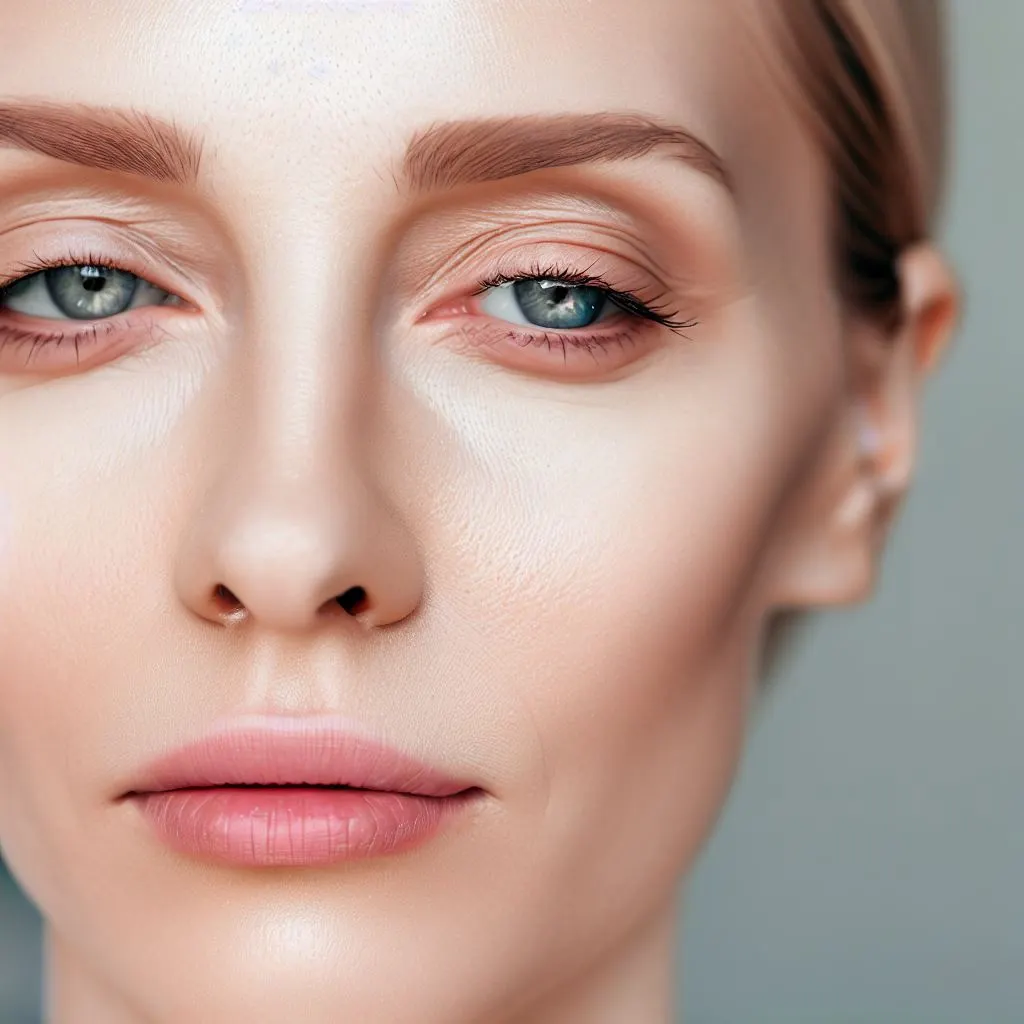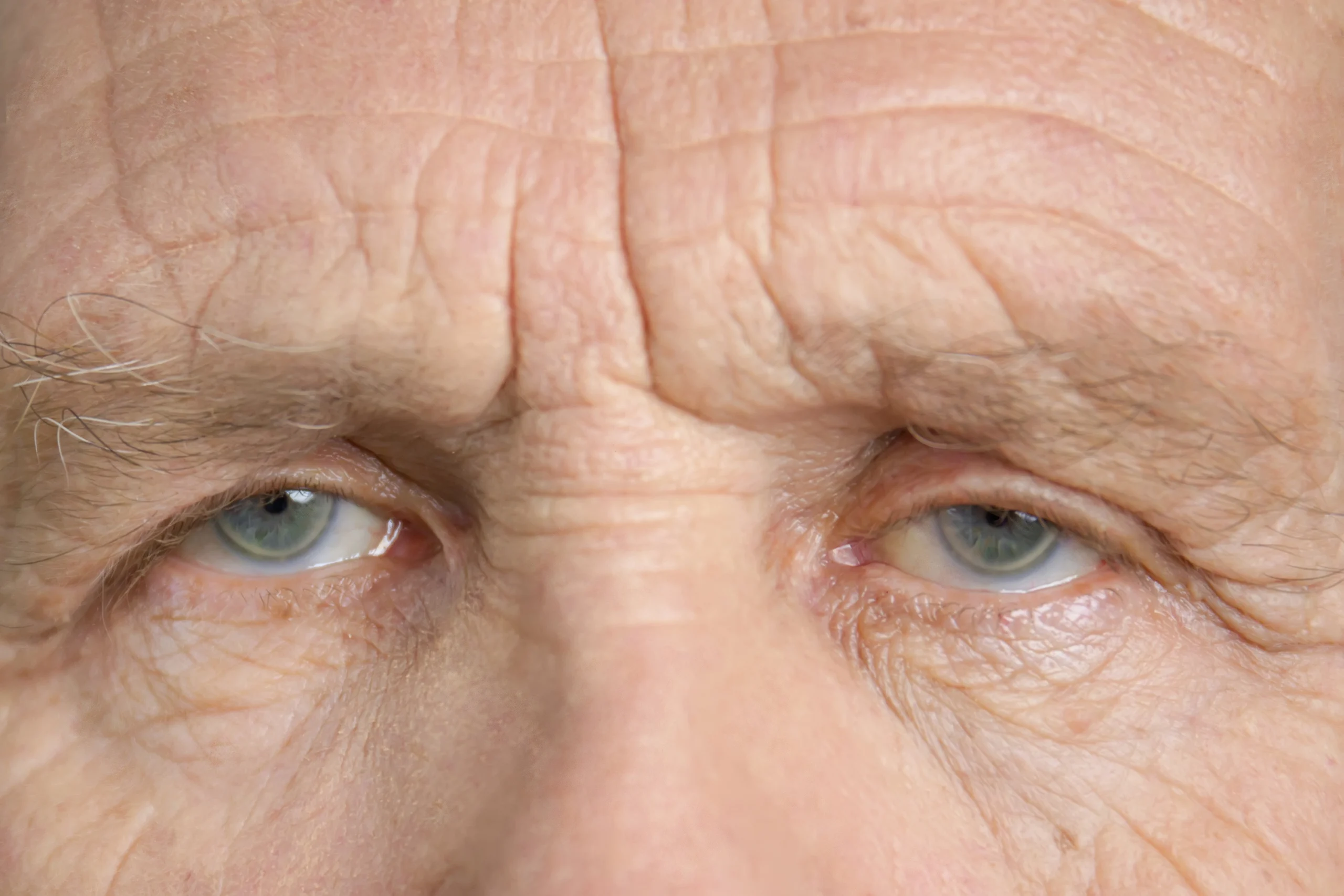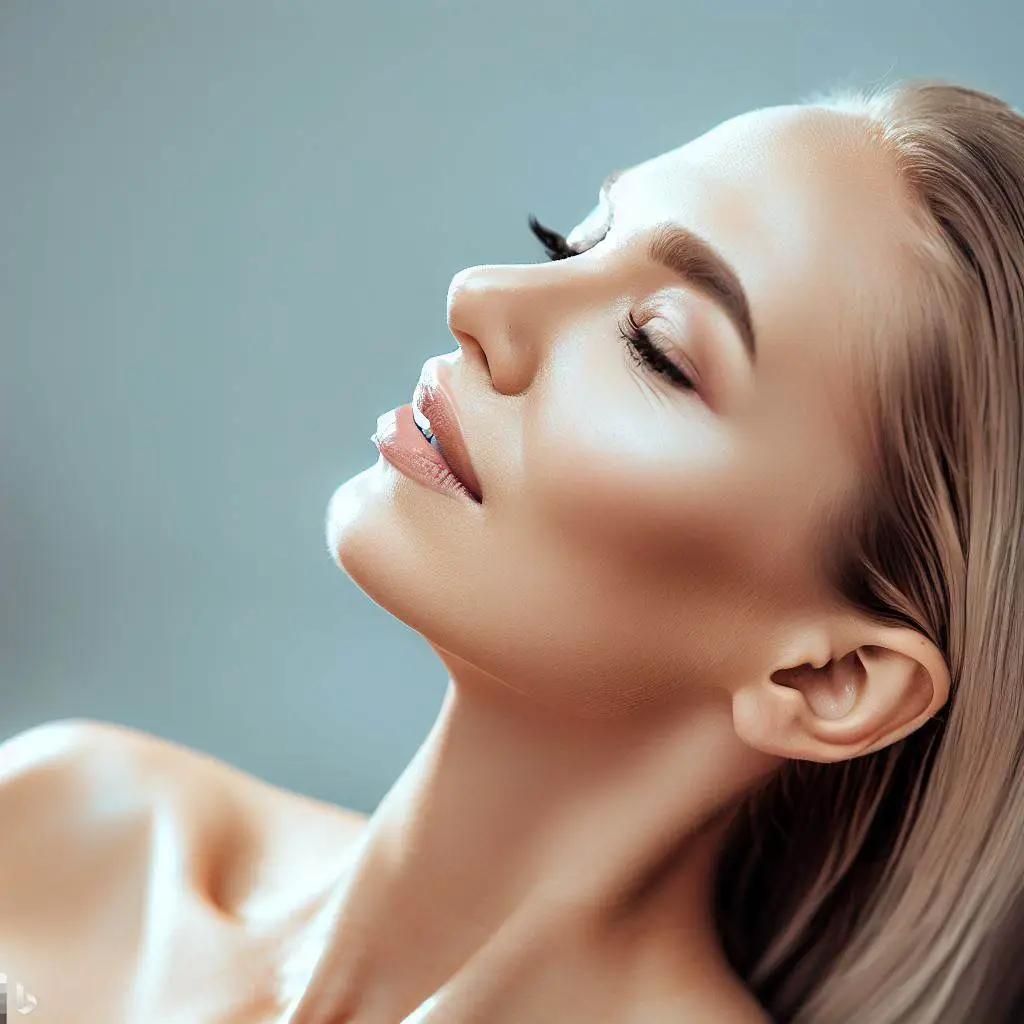
Frown Lines
Frown lines, commonly known as “11 lines” or “brow furrows,” are visible signs of aging that often result from repetitive facial expressions and environmental factors. The development of frown or glabellar lines is influenced by a combination of aging, repetitive facial expressions, and environmental stressors. Aging leads to a natural loss of collagen and elastin, reducing skin elasticity. Repetitive facial expressions, such as frowning, contribute to the formation of dynamic wrinkles. Environmental factors like sun exposure and pollution accelerate skin aging, hastening the appearance of these lines. Understanding these causes is crucial for tailoring effective treatment strategies.
Anatomy of Frown or Glabellar Lines
To comprehend how frown or glabellar lines form, it’s essential to grasp the underlying facial anatomy. These lines are often associated with the contraction of specific facial muscles, primarily the corrugator supercilii and procerus muscles. The continuous contraction of these muscles creates dynamic wrinkles, emphasizing the importance of addressing muscle activity in non-surgical treatments.
What are frown lines
Frown lines usually emerge between the eyebrows, creating a furrowed appearance. Recognizing the specific location of these lines helps individuals tailor their approach to address their unique concerns effectively.
Preventive Measures
Minimizing premature aging involves adopting preventive measures. Lifestyle changes, such as avoiding excessive sun exposure, adopting a consistent skincare routine, and refraining from prolonged facial expressions, can significantly contribute to preserving youthful skin. Sun protection, in particular, plays a pivotal role in preventing collagen breakdown and the early onset of lines.
At FCP Dermatology we offer a wide range of surgical and cosmetic Dermatology services, in a 5-star luxury setting.
- +1 (416) 861-8600
- Contact via Email
Frown Lines Treatment
Dermal Fillers
Botox
Related Aging and Skin Concerns
Frown Lines
Safety Considerations and Side Effects
Ensuring safety during cosmetic procedures is crucial for a positive experience. When considering treatments like Botox and dermal fillers for addressing Frown Lines, it’s essential to seek the expertise of a qualified dermatologist. These professionals possess the necessary skills to administer these non-surgical options safely. While temporary side effects like bruising or swelling may occur, they usually subside swiftly. Emphasizing the transient nature of these side effects is key to instilling confidence in the safety and effectiveness of such cosmetic interventions, ensuring individuals can enjoy the benefits of these treatments with peace of mind.

The Best way to get rid of frown lines
Frown Lines Treatments
Unlocking the full potential of facial rejuvenation often involves combining different treatments. Synergizing Botox and dermal fillers, for instance, can address various aspects of aging, offering a more comprehensive and tailored solution. Understanding the benefits of combination treatments provides individuals with options for achieving enhanced and personalized results.
Botox for Frown Lines: Exploring Botox as a solution for Frown Lines reveals a minimally invasive procedure that entails injecting botulinum toxin into specific muscles. This action effectively blocks nerve signals responsible for muscle contractions, leading to a relaxation of the muscles and a visible reduction in frown lines. It’s important to note that the effects of Botox are temporary, requiring periodic treatments to maintain the desired results. By addressing common concerns and debunking misconceptions about Botox, individuals can gain a clearer understanding of this procedure, empowering them to make well-informed decisions about their cosmetic choices.
Dermal Fillers for Frown Lines: Dermal fillers offer an alternative approach to addressing Frown Lines by concentrating on restoring volume and filling static lines. Through the injection of substances like hyaluronic acid, these fillers help plump up areas affected by collagen loss, effectively smoothing out wrinkles. The distinctive benefits of dermal fillers lie in their ability to provide volume and hydration to specific facial regions. This understanding empowers individuals to make informed choices about their cosmetic treatments, selecting the option that best suits their unique concerns and desired outcomes.
Treatment Results
Recovery and Results
Understanding the recovery process and expected results post-Botox or dermal filler injections is crucial for managing expectations when seeking treatment for Frown Lines. The recovery period is generally minimal, with individuals resuming normal activities shortly after treatment. Visible results vary, with Botox effects becoming noticeable within days and dermal filler outcomes immediate but continuing to improve over time. This knowledge empowers individuals to plan their schedules effectively around these minimally invasive treatments.

Age Spots FAQ
Frequently Asked Questions about Age Spots
Liver spots, also known as age spots or solar lentigines, are flat, brown spots that develop on the skin due to prolonged sun exposure and aging. They commonly appear on areas frequently exposed to the sun, such as the face, hands, and arms.
How to remove brown spots on face?
Liver spots, also known as age spots or solar lentigines, are caused by prolonged sun exposure and aging, which lead to an increase in melanin production and the development of dark spots on the skin.
Freckles are small, concentrated spots of pigment that develop as a result of genetics and sun exposure. They are triggered by an increase in melanin production
How to get rid of age spots: Age spots, also known as liver spots or solar lentigines, can be treated with options such as topical bleaching creams, cryotherapy, laser therapy, chemical peels, and microdermabrasion.
How to get rid of dark areas on face: Dark spots on the face can be treated with various methods, including topical creams containing ingredients like hydroquinone or retinoids, chemical peels, laser therapy, and microdermabrasion.
How to get rid of brown spots on face: Brown spots on the face can be treated with options such as topical bleaching creams, chemical peels, laser therapy, and microdermabrasion, which can help reduce the appearance of hyperpigmentation.
Natural remedies for age spots include applying lemon juice, apple cider vinegar, aloe vera, or vitamin E oil to the affected areas. However, effectiveness can vary, and it's essential to consult a dermatologist for proper guidance.
Despite their name, liver spots have no connection to liver health. They are simply a common sign of sun-induced skin damage and aging.
Yes, age spots and sun spots are essentially the same thing. They are both terms used to describe flat, brown or grayish patches that appear on the skin, particularly in areas exposed to the sun, such as the face, hands, arms, and shoulders. These spots develop due to an accumulation of melanin, the pigment responsible for skin color, as a response to UV exposure over time. While some people may use the terms "age spots" and "sun spots" interchangeably, they refer to the same phenomenon of hyperpigmentation caused by sun damage and aging.
Cancerous sun spots, or potentially cancerous lesions, may exhibit certain characteristics that differ from benign sun spots. These characteristics, often referred to as the ABCDEs of melanoma, include:
A: Asymmetry - One half of the spot does not match the other half.
B: Border irregularity - The edges of the spot are irregular, notched, or blurred.
C: Color variation - The spot may have various shades of brown, black, or other colors, or it may appear red, white, or blue.
D: Diameter - The spot is larger than the size of a pencil eraser (about 6mm) or is growing in size.
E: Evolution - The spot changes over time in size, shape, color, or elevation, or it becomes symptomatic, such as itching or bleeding.
It's important to note that not all cancerous spots will exhibit all of these characteristics, and some benign spots may display similar features. If you notice any changes in your skin, including the appearance of new or changing spots, it's crucial to consult a dermatologist for evaluation and proper diagnosis.
Preventing age spots primarily involves minimizing exposure to ultraviolet (UV) radiation from the sun and adopting healthy skincare habits.
Age spots typically do not grow or change significantly in size over time. Once they have formed on the skin, they tend to remain stable in size and appearance, although they may darken or become more pronounced with continued sun exposure or as a result of aging. While age spots themselves do not grow, it's essential to monitor any changes in the size, shape, color, or texture of skin lesions, as these changes could indicate more serious skin conditions, such as melanoma. If you notice any unusual changes in your skin, it's important to consult a dermatologist for evaluation and appropriate management.
Sun spots typically do not go away on their own. Once they have formed on the skin, they tend to persist unless treated. However, with appropriate treatment and preventive measures, the appearance of sun spots can be minimized or faded over time. Treatment options for sun spots include topical bleaching agents, chemical peels, laser therapy, cryotherapy, and microdermabrasion. It's important to consult a dermatologist to determine the most suitable treatment approach based on the severity of the sun spots and individual skin characteristics. Additionally, practicing sun-safe habits such as wearing sunscreen, seeking shade, and wearing protective clothing can help prevent the formation of new sun spots and reduce the risk of existing ones worsening.
The frequency of professional treatments for age spots depends on the specific treatment method used and the individual's skin response. Some treatments may require multiple sessions spaced several weeks apart for optimal results.
While diet and nutrition play a role in overall skin health, there is limited evidence to suggest that specific dietary factors directly impact the appearance of age spots. However, maintaining a balanced diet rich in antioxidants, vitamins, and hydration can support skin health and may contribute to a more radiant complexion.
Common misconceptions about age spots include beliefs that they can be completely prevented, that natural remedies are always effective, or that all age spots are harmless. It's essential to seek accurate information from reliable sources and consult with a dermatologist for personalized advice and treatment options.
Frown Lines FAQ
Frequently Asked Questions about Frown Lines
Frown lines, also known as "11 lines" or "wrinkles between eyebrows," are vertical lines that form between the eyebrows.
- The primary causes include aging, repetitive facial expressions (such as frowning), genetics, sun exposure, and environmental factors like pollution.
Facial muscles contract during expressions like frowning, leading to the formation of lines. Over time, this repetitive movement can cause permanent lines.
- While some factors are beyond control, lifestyle changes like sun protection and skincare routines can minimize premature aging and reduce the risk of lines.
Yes, adopting a healthy lifestyle, including proper skincare, sun protection, and avoiding smoking, can contribute to reducing the appearance of frown lines.
Botox and dermal fillers are popular non-surgical options. Botox relaxes muscles, while fillers restore volume, reducing the visibility of lines.
Botox injections block nerve signals in the muscles, preventing contractions and softening the appearance of frown lines.
Dermal fillers, like hyaluronic acid, add volume to targeted areas, filling in lines and wrinkles for a smoother appearance.
It's crucial to seek qualified medical doctors for treatments to ensure safety. Temporary side effects may include redness or swelling.
Recovery is typically minimal, with patients often resuming regular activities immediately after treatment. Results become visible over several days.
Yes, combining Botox with dermal fillers or other treatments can provide comprehensive and enhanced results.
- Following post-treatment care instructions, adopting a healthy lifestyle, and regular follow-up appointments contribute to maintaining youthful skin.
A consultation allows the medical doctor to assess individual needs, create personalized treatment plans, and address any concerns.
Skincare routines focusing on hydration, using quality products, and incorporating anti-aging ingredients can support overall skin health.

